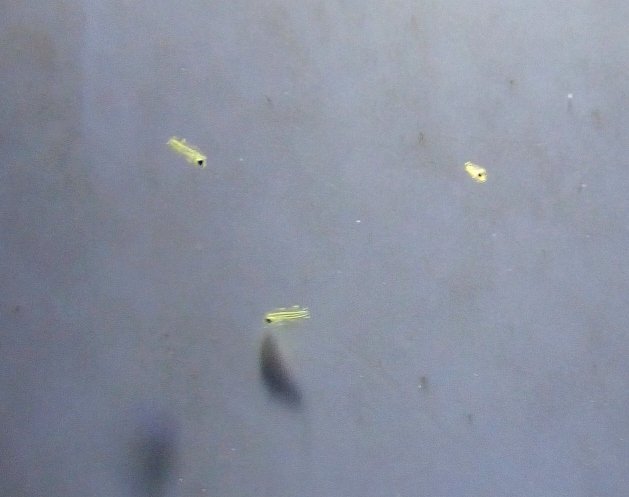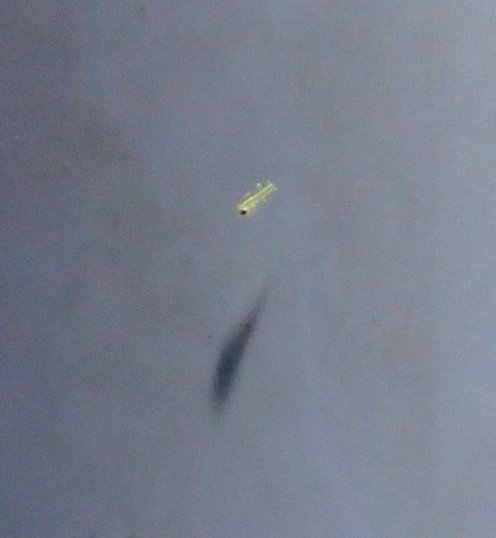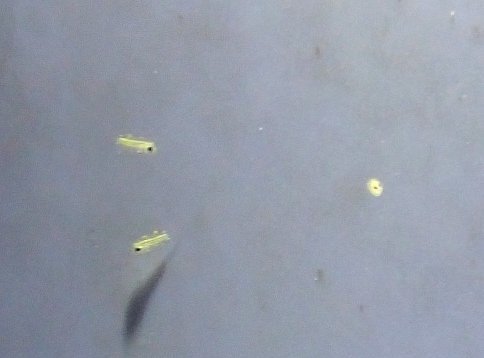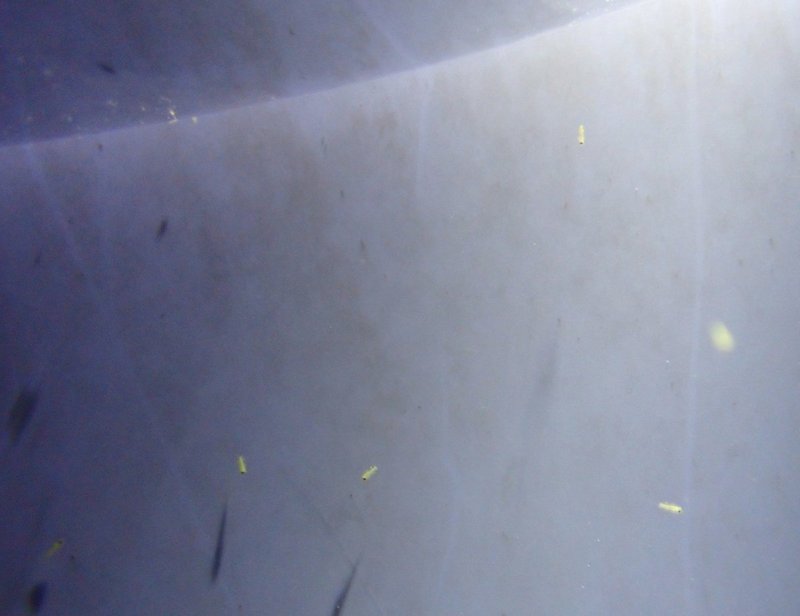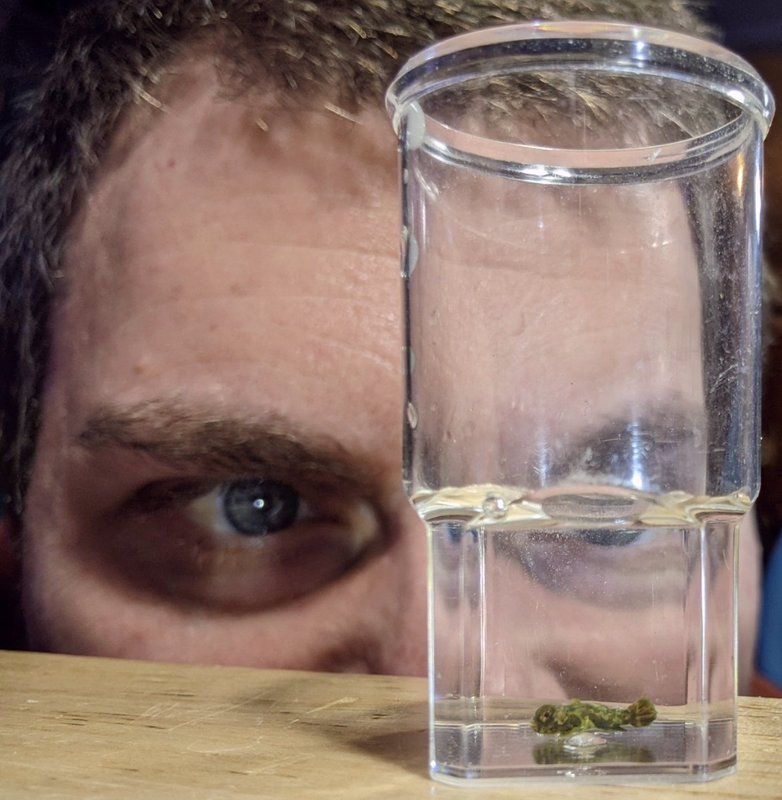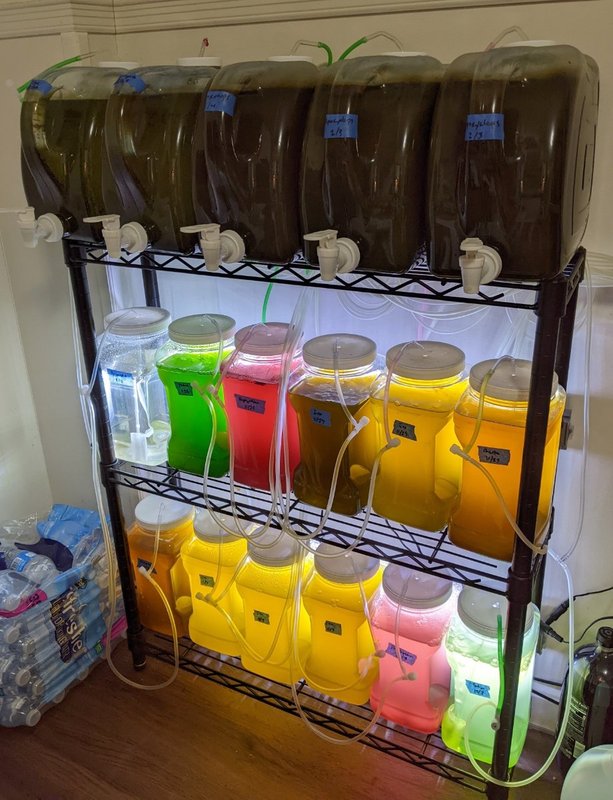-
Posts
748 -
Joined
-
Last visited
Content Type
Profiles
Forums
Gallery
Events
Store
Everything posted by DaJMasta
-
Is it touching corals, or just reaching in the tank? I've heard of nematocysts being sort of dumped into the water column, but that or some kind of aleopathy could put stuff in the water that could effect you, and you likely could run carbon for a bit to get it out (and stick your hand in to see if the reaction has stopped). You can also just develop allergies to things - it works through repeated exposure with many other things, so it could be that touching something regularly has lead to an allergic reaction. May also be worth checking if there are any pissed off palys or zoas in there, it's not likely but it's possible for palytoxin to be in the water column in some quantity (I don't know how it effects other livestock, but it could be that a very small amount would cause a rash).
-
Is the acan somewhat new to the tank? I had a couple of frags which looked nice for a few weeks, started to recede, and then turned around and started growing properly as they got acclimated to my system - I sort of suspect it was lighting related, but not totally sure. Also be on the lookout for anything that may nip at them, acans seem to be pretty prime targets for nipping.
-
Probably not. Alkalinity does help buffer pH up, but you have to get it pretty depleted for the pH to drop just because of that. 6 isn't a terrible range, though it's low, but the corals are probably reacting to the swing more than they are the specific number. That said, if you supplement your alkalinity with lime water or soda ash, both of which also raise pH, maybe the lack of dosing (if that was the cause) would show up on a pH meter.
-
I heard about these a couple of months ago and there's a lot of promise there. I wonder how long the nauplii stay fairly nutritious/how far they get along without any supplemental feeding. Not that it would necessarily be a problem - people just baby brine shrimp and hatch them every day for a reason - but having a more nutritious and smaller easy-entry source could be quite useful for someone wanting to get started. Having them all start as eggs also makes the feed size much more uniform, so you wouldn't have to sieve your hatched batches.
-
Neat, I short of wish it was more about the squid but the microbiome's interaction with animals sounds like it's been undersold for a long time and is just starting to be investigated, it seems there's a lot to be learned in science and medicine from studying how microbes coexist with animals.
-
What do you mean curing it? If you had it shipped overnight/in water, it should have minimal dieoff and you should just treat it as normal livestock. A lot of the stuff growing on it will be photosynthetic or will need some kind of food (like particulate for a filter feeder), so "curing" it like with longer time in transit rock will actually kill off some things that made the trip. For the more live stuff my approach would always be a 'soft cycle' where you basically water change away any initial ammonia spike - but with an established tank and quickly shipped rock, there shouldn't be much. KP has had good rock since they were called SeaLife Inc, though, and I've been quite happy with other gulf maricultured rock.
-
After feeding them, they seem to have congregated near the top, and between that and being more opaque, I think I've got more of them - maybe two dozen or so. Also I've decided to use a 200 micron upper size limit for the food again because it turns out I just don't have a 150 micron sieve yet.
-
Made a couple of attempts since the last post, but basically just collecting eggs and adding them to already running larva vessels, trying out different aeration settings, and then trying a water change (which I think was dumped in fast enough to injure the young prolarvae in there). Reset the larval tank last week and developed a new version of logs I'll keep for each spawn attempted - I had some marks on the vessel and some notes in a notebook, but not really a specific plan to stick to, a substantial record of an attempt, or a way to make more comprehensive notes. So I drafted a document, started off a set of eggs, and had none hatch because the RO used for the new water was still 4 C under temperature late at night when I felt like I had to add them to the vessel and go to sleep. The next day, I removed the eggs I saw, collected another (bigger) spawn, and started again: So as of today, out of more than a hundred eggs, I should have more than a dozen prolarvae, shortly they'll be able to eat. I'll try slightly smaller sieve size for initial feedings (copepods that fit through a 150 micro screen and are caught by a 45 micron screen), and see how they do. I will hold off until the weekend for the first water change and try to be gentle pouring the new water back in to try and keep from injuring the larvae. In recent attempts I've had a lot of trouble getting them survive a week, but I'm hoping the clean vessel and more rigorous plans should help. I also got an underwater camera (Olympus TG-6) a bit ago and figured I would give it a dunk to see what they looked like while still in the tank. The prolarvae at this age seem to like being near the surface, and while focus is really tricky (especially when you can't see the screen because of the angle), they apparently don't pay too much heed to their orientation at this age:
-
Unless you've got something setup for denitrification, I'd do the water change. You want the ammonia gone, the nitrites minimal, but nitrates are the final stage before either conversion to nitrogen gas in some kinds of anoxic bacteria (think deep sand bed), or removed with a skimmer/scrubber/manually or through water changes.
-
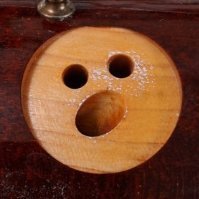
Thanks to sponsors and frag sellers at the meeting
DaJMasta replied to AlanM's topic in General Discussion
I ended up with a few frags from the vendors after not planning on getting anything and was impressed by the variety available! -
It could certainly be, it's one of those algaes that does well in low nutrient conditions, and any amount sunlight or bright room lights would be plenty to grow some - but where would it have come from? Unless you have some equipment, rock, or livestock that arrived wet, I don't know where cyano could have been introduced from. Sharing equipment (containers, nets, etc.) could also introduce it. If it actually is dust - that it blows around as particulate - it's not cyano. Cyano looks like a sort of dust or haze, but when it grows in it mats together and doesn't behave like a dust in the water.
-
It wouldn't help with the aiptasia if that's still a problem, but what about getting the coral out and turning off the lights and blocking up the sides for a month or so (or at least preventing any sort of intense light). Still would be a big shift in the biome, but it would likely retain a lot of your biological filter and microfauna. Have you tried urchins on the turf algae? They usually don't shy away from much, though they won't likely polish it off entirely - just a management solution. I don't think I've faced down the gigantic heap of problems all together before, but a hard reset undoes a lot of positives even if there's a heap of negatives, so it's at least a weighty choice to make.
-
They do sell phosphate additives, but feeding a little extra nori or a little extra frozen food would likely have the desired effect. I feed lots of frozen and have continuously high phosphate, so I do think it contributes!
-
I'm not familiar with the unit you're using specifically, but if you've got a water level sensor and a maximum runtime limit, you're pretty safe. A low and high water sensor can help, or even a sensor for the top off reservoir, but it may be more a matter of setup than capability of the device. I had a JBJ long ago that worked well enough, I've heard the Tunze Osmolator get the most love over the years, but some of the optical sensor options seem to be pretty highly rated now too.
-
I've definitely seen little aiptasia traveling around in the sandbed, but they're either brown or clear - not green - and they always look more 'organized' than that. You can usually clearly see an oral disk and single ring of tentacles rather than a sort of tuft of tentacles. That lower right one in the first pic is the closest to an aiptasia, but maybe 2-3x the tentacles and not in that organized fashion. At least, that's how I think of them. Even if they were something nefarious, they'd be adhering to the sand, so they'd be easy to pull out and get a closer look/see if they move or react at all.
-
I wouldn't, looks like tufts of hair algae to me. You could pull them out just to reduce the spreading speed and take a look to be sure, but it's likely that if they're growing, it's not the last of them you'll see. Depending on tank age/parameters/stocking, maybe it's no concern, and maybe changing something a bit could help prevent it from being a problem.
-
My guess would be the lightning doves, but I haven't seen their babies - I agree the collonistas tend to look rounder rather than the point on the back end these have. You could try some magnification to get a better look, but it may just be hard to tell until they start getting coloration. A lot of snails can't readily reproduce in a tank, and parasitic ones would likely be living close to their host, so I doubt they will become a problem, at least.
-
Thanks, I've found a few for each online (as well as an article on raising mandarins), but it's not always with the same goal in mind, and a lot of them seem to be based on older techniques (feeding artemia nauplii, for example) which doesn't directly correlate to what I've been trying as much. If you've got something of particular interest, though, I'm all ears. An update: I had a couple of captured eggs that I tried making runs of and was seeing lower fecundity and then losses in the first week - there were a couple of potential reasons, one the failing tisbe culture (which did actually have individuals that I collected and grew out to add to the new culture). I also noticed a similar reduced spawning and fecundity earlier, so it could be a sort of periodic lull. I've also got some shrimp going in my vessels right now, so newly hatched larvae would have a tough run. In any case, my next run I should be even better prepared for. I started several new zooplankton strains and have Euterpina growing readily with Acartia growing in, as well as Tisbe, Tirgriopus, and Apocyclops still in production (and producing well again). I've also got an extra species of phytoplankton which has the potential to increase nutrition of the copepods or output - but I have no evidence either way for that. In addition to the increased food, I'm going to try two specific things that were described in a MACNA 2022 talk ( ) The first, is that I will start the eggs with almost no flow in the vessel, just a trickle (a bubble or two a second) in the middle to try and keep temperature and oxygenation layers from separating. The second, is I will actually do a water change or two. Basically, this talk outlines their methods for culturing several kinds of fish, and they mention specifically that they hatch eggs with no flow, then increase it over time, and that it's been shown that high nitrate levels (even moderate ones) can effect larval development and even growth defect rate, even for organisms that otherwise seem to tolerate pretty much any nitrate level you can keep your tank at. In my more recent tests I've been experimenting with flow rate and have definitely seen that lower flow rates are better for these guys, so I plan on starting with the trickle, then moving up at one week and then at the end of week two. I'm also planning ~5 gallon water changes at similar intervals, maybe on the same day, to keep the nitrate levels down. I think feeding exclusively live food has had a positive effect on water quality, but buildup of nitrates could explain a number of my later-stage losses, and I may even have worked out a system that makes it reasonable to do without removing any larvae (always tricky, especially when they can't swim well). Though the next run of mandarins is probably at least a week off from starting - I've got some peppermint shrimp larvae going (and the last run went 4 weeks, close to settling) and just caught my first batch of pederson shrimp larvae last night.
-
Well, the news this week isn't good, unfortunately. I lost her on Sunday. 124 days old, not yet to full coloration. I don't know exactly what went wrong, but I have some suspects: The day I took that picture I moved her into a larger space (about 2x the volume, same footprint) with a coarser mesh, and fed as usual. I think the combination of the new space (fewer residual copepods) and the coarser mesh (more able to escape), probably lessened the available food. But perhaps more critically, I found out a couple days later that my Tisbe culture had crashed, so while I was feeding plenty of tigriopus and apocyclops, it may be that neither was easy for her to actually eat, or perhaps they were more likely to escape, and I think the combination of things ultimately lead to her running out of usable food. I did realize Sunday morning that she was acting more lethargic, and fed half a day's total harvest directly (several times a normal day's addition to the vessel) then, but she only ended up moving an inch or so from that point, so it was probably too late to get the nutrition she needed. The crash of the tisbe culture may actually explain the slower development and reduced growth in the last few weeks if that was her primary food source - I don't know how long it has been since it stopped producing. I also tried some prepared foods (TDO B1 and B2) added to the new vessel when I started it. While the coarser mesh should have meant plenty of water exchange with the tank it was in, there is some slim chance that this newly added food fowled the water somewhat. Not likely given the quantity and exchange with the surrounding tank, but a possibility. Despite 4 months of progress coming to an end, while somewhat discouraged I'm not deterred. I have a spawning pair and fairly reliable source of eggs, and I've actually been trying some runs to get new larvae. Nothing settled yet, but I think I'm getting some useful information on the conditions they need (seems like very low flow is actually bad for them, and while higher flow I don't see the larvae easily, they are visible in the hours after when I turn it down). I will try some additional runs to try to hone in on what is best to make them work - I hope to get more than just two settled out of a batch. I've also got copepods on order to arrive tomorrow, and this time four new species. My intent is to restart the tisbe culture and then swap one apocyclops culture to something new, but I've got three new candidates (acartia, pseudodiaptomus, euterpina) and only one of which I've attempted before. Two of the new ones are also some version of benthic, which should be good for the mandarins. I'll see what I can grow in and keep going, and hopefully diversify my copepod offerings considerably as apocyclops as 3/5 cultures doesn't seem to be great for a lot of my larval rearing projects. I may also print another of the larger vessels and use the finer mesh in the base, but if growth rates are better, the coarser mesh may be just fine as an option, but at the very least having a second one so I can swap one out to clean it is useful. The journey continues. It's sort of rough making all these attempts and losing 100% so far, but no one's claimed it was easy and honestly, I think peak survival rates in the wild for most marine larvae are probably only a couple of percent, tops, and if left in the display nothing would survive, so I certainly don't feel like I'm just slaughtering them with my attempts, despite the survival rate. Hope to find a more reliable way to get them to settle soon and have many more attempts at these later stages.
-

Talk to Me About ICP Test Results - Specifically Trace Elements
DaJMasta replied to p3rmafrost's topic in General Discussion
For the RODI, it looks normal - if you add up all the ppb in the chart, you seem to have less than 500 or so, which would mean the impurities measured in ppm would round down to zero still. No filtration is perfect, but it appears like yours is working well to me. For the trace elements, I think it is the case that your system uses up what you add regularly. All salt mixes will have trace elements too, and I think the recommended dosages are typically pretty low when compared to the usage of a large tank - the idea is that they get you started at a rate that is unlikely to be a problem for most, even if it doesn't end up being the amount your system needs. My approach would be to increase the dosage noticeably (maybe 50%), and then retest in a couple of weeks. Short enough that it's unlikely for too much to be building up if the dosage is too much, but long enough for usage to stabilize somewhat. It could also be that the corals and things are using more than usual now that more is available if they were lacking before, but I don't know how much of an effect this would have. A more conservative, lower testing option, would be to increase the dosage a small amount and then just take a look at the next ICP test. Especially if you are already seeing improvements from the trace element dosing, just giving it a bit more will probably increase the benefits a bit, and if you keep the overall increase low, either you'll start to see some showing up on the next test or your system will use it all and then they will read low but you'll still reap at least some of the benefits of dosing. Another alternative would be to supplement your trace elements dosing with a product designed specifically for what you're missing. I don't know offhand what the ideal numbers were, but I had similar low levels of iron, iodine, manganese, etc. - which ended up being what was in chaetogro and lugols, so I just add a small amount of that to my system now. Since some of the ones I was missing were what grew macroalgae and I have a scrubber full of it, I figured my usage was above usual, and the same goes for iodine and its use in invert molting, so while I haven't yet run a second ICP on my system, I think I'll be getting my numbers more normalized just by targeting the low ones more specifically. -
17 weeks and a bit - 121 days, she's not growing all that quickly but is a little darker. Moved her into a larger holder and fed some prepared food before adding a real pod population, hopefully she'll get some and keep growing and coloring up. That's a Salifert test kit vial, so she's about half its width, so 10-11mm.
-

Culturing copepods for dwarf seahorses?
DaJMasta replied to Kathryn Lawson's topic in General Discussion
Thanks for the votes of confidence, but I think it's just barely getting to a year and a half of experience, so while I tend to dive into things and have figured out a lot, I think there's plenty of room for growth yet. There have been some good talks on this topic at MACNAs, though, and there is some good information on algae culturing and copepod culturing from some of the vendors. For text info, there's stuff from algae research supply and reed mariculture for a number of species, and then on youtube there's: A portion of this one is about culturing and sterilization: And this was really my starting point for developing home techniques for algae, copepods, and the process behind raising larvae (also very DIY oriented, great for tools): -

Culturing copepods for dwarf seahorses?
DaJMasta replied to Kathryn Lawson's topic in General Discussion
This is my setup for copepods and phyto: Takes a bit to get going, certainly, but this rack produces quite a bit - almost 1L a day directly into the tanks and ~1.5 gallons of copepod cultures, which is likely enough to sustain a couple of adult mandarins or several seahorses on them alone (though some ponies are much bigger than mandarins, and it seems many are able to be trained onto mysis for at least a portion of their diet). My basic setup is 5x 2 gallon culture vessels for copepods and 11 one gallon cultures for phyto, each shelf is started offset by half, so I harvest usually twice a week, 3-4 days apart. Copepods are harvested every day, and I train 1/10th to 1/8th of the vessel and then refill it completely with a grown out phyto culture. I've emphasized variety to try and support as many organisms as possible and to get a feel for growing different things (the red porphyridium was added a month or so ago, the empty looking one is actually pyrocystis dinoflagellates that are bioluminescent!), and I've got 3 jugs of apocyclops (nearly bulletproof, high production cultures that can eat pure phyto, don't really need water/vessel changes, and are pelagic), and then one each of tisbe and tigriopus. I'd like another swimmer (probably to replace an apocyclops), likely acartia if I can get them, and have tried parvocalanus and pseudodiaptomus with less than ideal results. Everything's plumbed to a single linear air pump, and each jug has a hard airline to bubble it in and keep things circulating (though it's on low in the two benthic copepod cultures) For daily harvesting, the setup takes maybe 5 minutes, and I drain them through sieves (in my case, 4 cup measures with a side cut out for a suitable sorting mesh), but twice a week it's closer to half an hour plus initially making the saltwater to make sure the salinity is right, harvest the jugs, and restart all of them with new fertilizer, water, vessel, etc. (I move something like 1/6th of the original culture to a new vessel and harvest the rest). You will run into crashes and it is extra work, but getting daily live phyto and pods is not crazy work. Once you have a rhythm and workflow, it can be annoying when put off, but it's very manageable, and it can be much simpler than this if you, for example, go with one kind of phyto and copepod. -

question on plumbing extra tank into system
DaJMasta replied to BowieReefer84's topic in General Discussion
You can always plumb an additional tank entirely in parallel with the display - new return pump (probably much smaller) and its own drain into the sump provided the tank is above the sump's water level. This can be done basically as many times as you have space for, and while it's marginally more equipment, it makes removing or changing it pretty easy down the line. -

Looking for Advice - Weird or Unusual Corals
DaJMasta replied to p3rmafrost's topic in General Discussion
A good platygyra is certainly a cool piece, they are slow growers but can have pretty long sweepers, so giving them space is nice. Not super unusual, but some kind of Favite could give you an usual color or pattern. Again in the not rare but not all over the place, an anacropora would be a colorful and slightly unusual addition, as would a tubbs stellata monti, and I've always been a sucker for the ORA green birdsnest with bright metallic green polyps. Maybe some yellow or red porites could be a good choice? The neat thing about them is that their color mainly isn't fluorescent, so you can get fairly intense colors even under totally white spectrum. Then you could look for variety in growth pattern instead - a pavona, montipora confusa, or tabling acropora could give you a structure that looks different in the tank.




